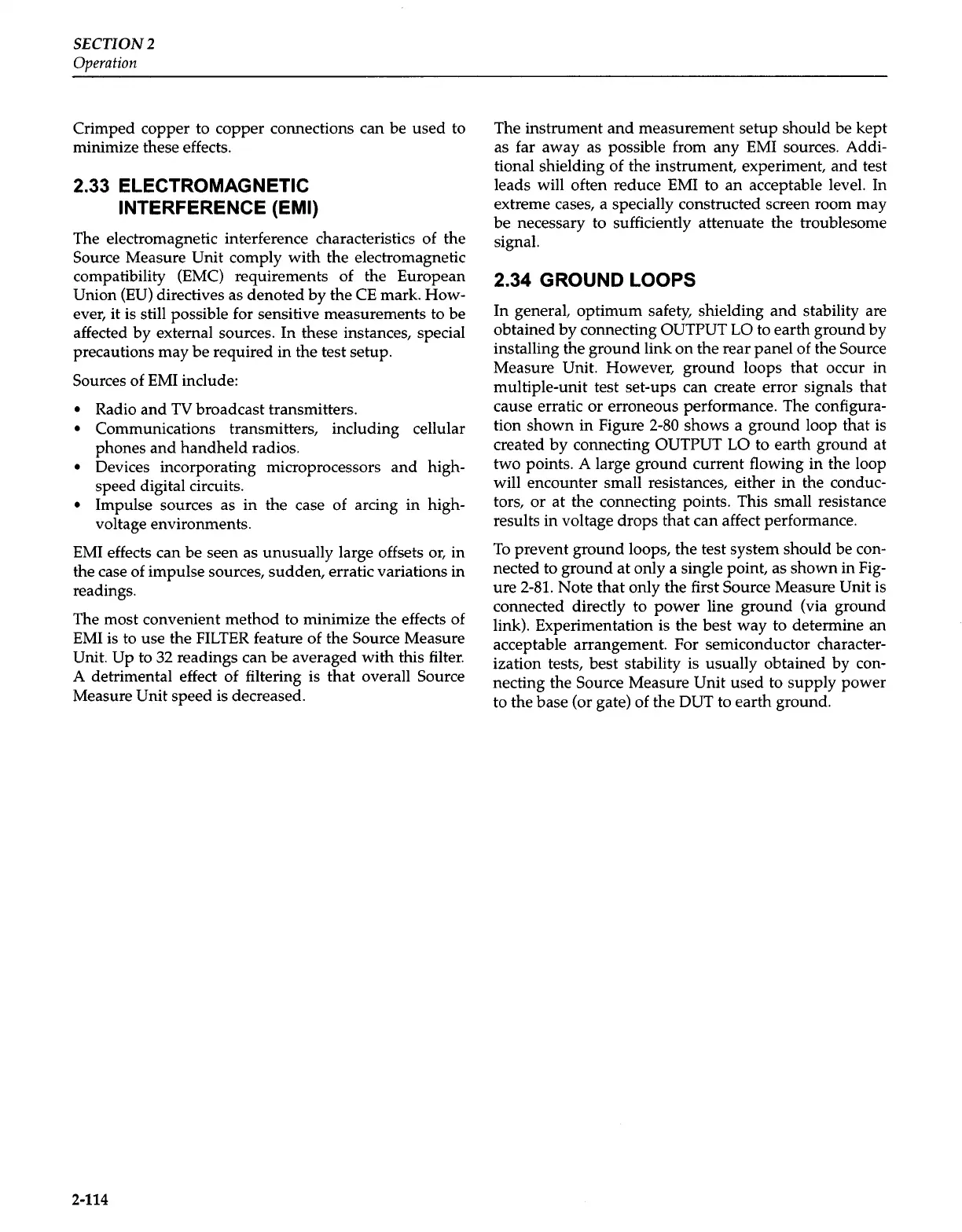SECTION2
Operation
Crimped copper to copper connections can be
used
to
minimize these effects.
2.33 ELECTROMAGNETIC
INTERFERENCE (EMI)
The electromagnetic interference characteristics of the
Source Measure Unit comply
with
the electromagnetic
compatibility (EMC) requirements of the European
Union (EU) directives as
denoted
by the CE mark.
How-
ever, it is still possible for sensitive measurements to
be
affected
by
external sources. In these instances, special
precautions
may
be
required
in
the test setup.
Sources of EMI include:
• Radio
and
TV
broadcast transmitters.
• Communications transmitters, including cellular
phones
and
handheld
radios.
• Devices incorporating microprocessors
and
high-
speed digital circuits.
• Impulse sources as in the case of arcing in high-
voltage environments.
EMI effects can be seen as unusually large offsets
or,
in
the case of impulse sources,
sudden,
erratic variations
in
readings.
The most convenient
method
to minimize the effects of
EMI is to use the FILTER feature of the Source Measure
Unit.
Up
to 32 readings can
be
averaged
with
this filter.
A detrimental effect of filtering is
that
overall Source
Measure Unit speed is decreased.
2-114
The
instrument
and
measurement
setup
should
be
kept
as far
away
as possible from any EMI sources. Addi-
tional shielding of the instrument, experiment,
and
test
leads will often reduce EMI to
an
acceptable level. In
extreme cases, a specially constructed screen room
may
be
necessary to sufficiently attenuate the troublesome
signal.
2.34 GROUND LOOPS
In
general,
optimum
safety, shielding
and
stability are
obtained
by
connecting OUTPUT LO to earth
ground
by
installing the
ground
link
on
the rear panel of the Source
Measure Unit. However,
ground
loops
that
occur in
multiple-unit test set-ups can create error signals that
cause erratic
or
erroneous performance. The configura-
tion
shown
in Figure 2-80
shows
a
ground
loop that is
created
by
connecting OUTPUT LO to
earth
ground
at
two points. A large
ground
current flowing in the loop
will encounter small resistances, either in the conduc-
tors,
or
at
the connecting points. This small resistance
results in voltage
drops
that can affect performance.
To
prevent
ground
loops, the test system should
be
con-
nected to
ground
at
only a single point, as
shown
in Fig-
ure
2-81. Note
that
only the first Source Measure Unit is
connected directly to
power
line
ground
(via
ground
link). Experimentation is the best
way
to determine
an
acceptable arrangement. For semiconductor character-
ization tests,
best
stability is usually obtained by con-
necting the Source Measure Unit
used
to
supply
power
to the base (or gate) of the OUT to
earth
ground.
